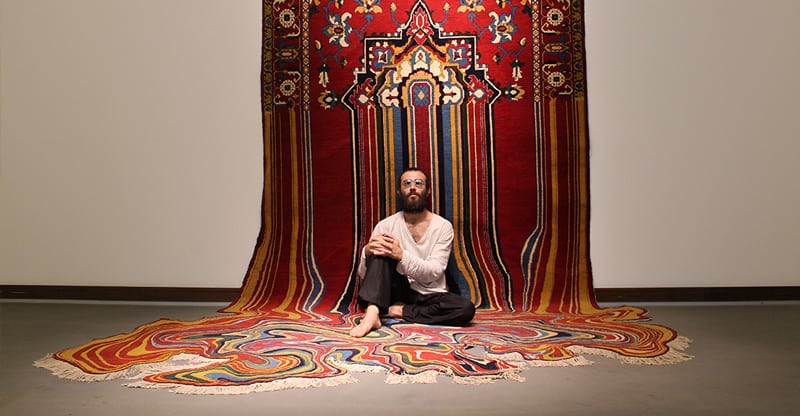Faig Ahmed is a contemporary artist from Azerbaijan whose works show the blend of traditional Azerbaijani carpets with a modern psychedelic twist. He represented Azerbaijan at the Venice Biennale in 2017 and his artworks were exhibited in such capitals of the world as New York, London, Paris, Berlin, Dubai, Rome, Venice, Washington D.C., Hong Kong, Mumbai, Sweden, Honolulu, Melbourne, Sydney, Moscow, and of course Baku. In this interview, we talked with Ahmed about his art, humble beginnings, success, and the importance of representation.
The first time I saw the works of Faig Ahmed, I was impressed by this unique modern twist to an item that existed for centuries and is rarely seen as an art object in the West. I was even more honored when I found out that Ahmed is an Azerbaijani contemporary artist, who even after his worldwide success and recognition continues living in Azerbaijan. A diaspora Azerbaijani kid in me couldn’t be prouder, as growing up I saw no representation of our culture in the modern world. It seemed to me that in order to admire my culture I needed to stay loyal to the traditions of my conventional background. However, Ahmed with his art showed me that there is a future not only for the contemporary Azerbaijani art movement but for the Azerbaijani community as well.
We started our interview by talking about the diversity of Azerbaijani culture. As Ahmed is very passionate and outspoken about Azerbaijani art, culture, and history I asked him if he expected to become a sort of an ambassador of Azerbaijan in the art world. “It happened without me wanting it or not,” he said smiling.
“Azerbaijani culture, for certain reasons, — geographical, political, social, etc. — has always been between this freedom, liberation,” Ahmed is referring to historical circumstances that shaped Azerbaijani society today. “Azerbaijani culture has been like this for hundreds of years, because of our geographical situation — being between big empires… When I am saying Azerbaijan, I am not talking about the Azerbaijan Republic, but Azerbaijan as a culture, which is wider as a region.” He mentions that the majority-Azerbaijani cities like Tabriz, Ardebil, Khoy, and Urmiya which are today part of Iran’s West Azerbaijan Province have always been known for weaving beautiful carpets in Persia. “For 500 years, these cities were the biggest centers in Persian Empire.”
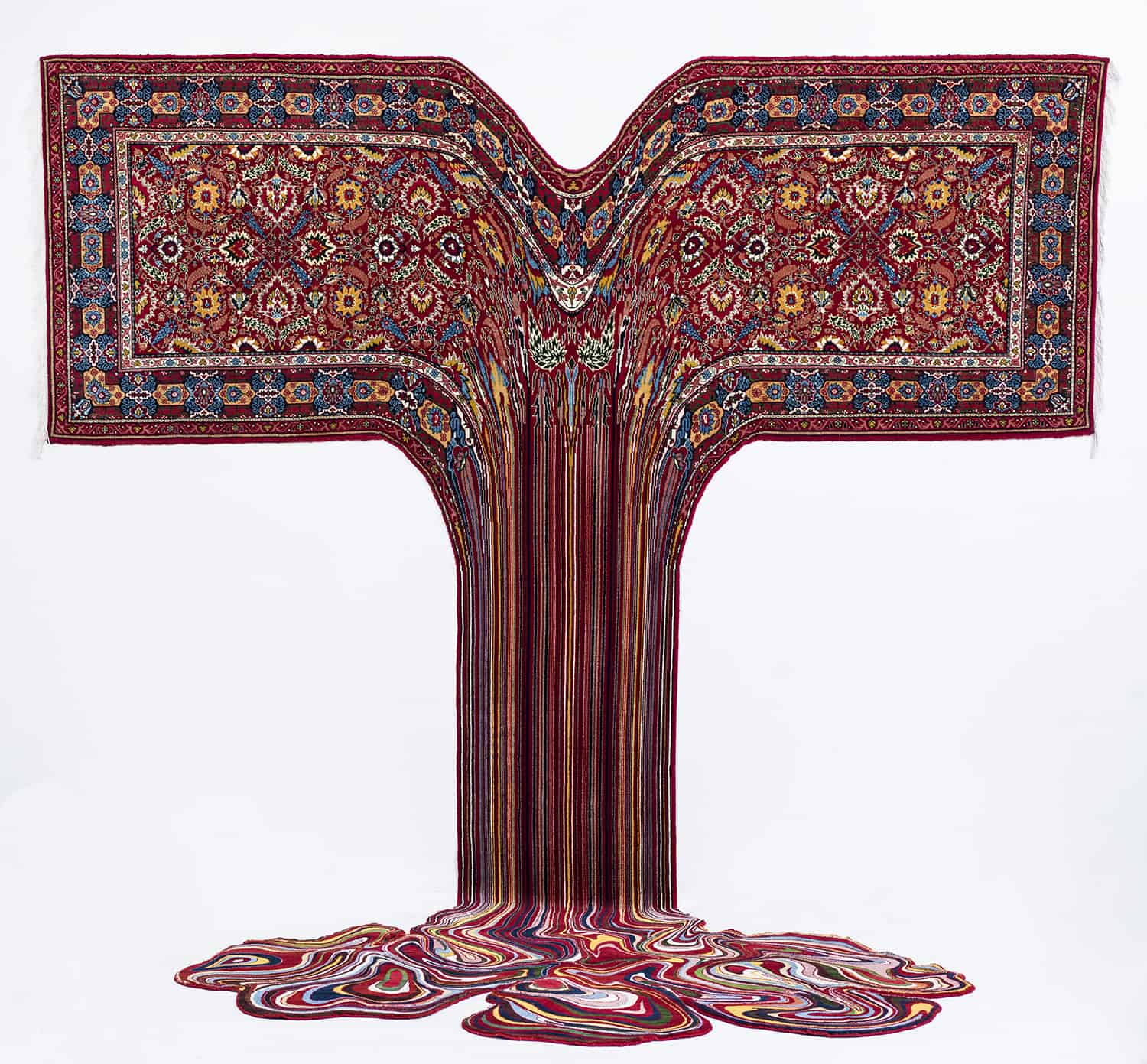
Ahmed’s love for his country and traditions is noticeable in every comment he makes about his culture: “Carpet has been traditionally connected with other parts of culture. If you put together Azerbaijani carpet and mugham (classical music of Azerbaijan), you will see the switch.” He explains that the first time he had this revelation was when he was in Peru talking to the shamans and hearing them sing their Icaro songs. “That made me connect with my own culture. When you are inside of your culture, you don’t ask why this why that, why this carpet why this music. When you are outside of it and people ask you, then you question yourself.”
Ahmed tells me how he read Nasimi’s works (the late 14th-century Azerbaijani mystical poet) in the old Azerbaijani language. He refers to Nasimi as “somebody who crystallized or recrystallized Azerbaijani Sufi philosophy.” We started talking about the importance of representation and the role of Azerbaijani creative people in the world scene when Ahmed mentioned such great musicians as Alim Qasimov, an Azerbaijani mugham singer, Vagif Mustafazadeh, an acclaimed Azerbaijani jazz composer and pianist, and Sami Yusuf, a British composer and singer of Azerbaijani descent born in Iran, whose name is widely known around the world. What unites all these great artists with Ahmed is the representation of Azerbaijan through their works of art.
Ahmed was born into a family of scientists. His father is an engineer and his mother is a doctor. “My parents are true Soviet people,” he laughed. When I asked him if his parents ever wanted him to follow in their footsteps and if they were against him becoming an artist he said: “They weren’t against it because they knew it’s not possible to be against what I want.” However, now he thinks if he wouldn’t become an artist he would probably be a monk.
“But another thing, from my childhood, I was drawing, playing with playdough. All our walls were [filled] with drawings. And they never stopped me, never told me: ‘don’t draw on this wall!’” Ahmed confines that one time they even let him cut the carpet. Maybe that’s when it all began?
“I have never been apart from art, that is why I never became an artist. I think I was born with a certain way of thinking that is suited for this discipline. For certain reasons — because of freedom — freedom to think and act, things that you can’t do in all other disciplines, not even in music, for example.”
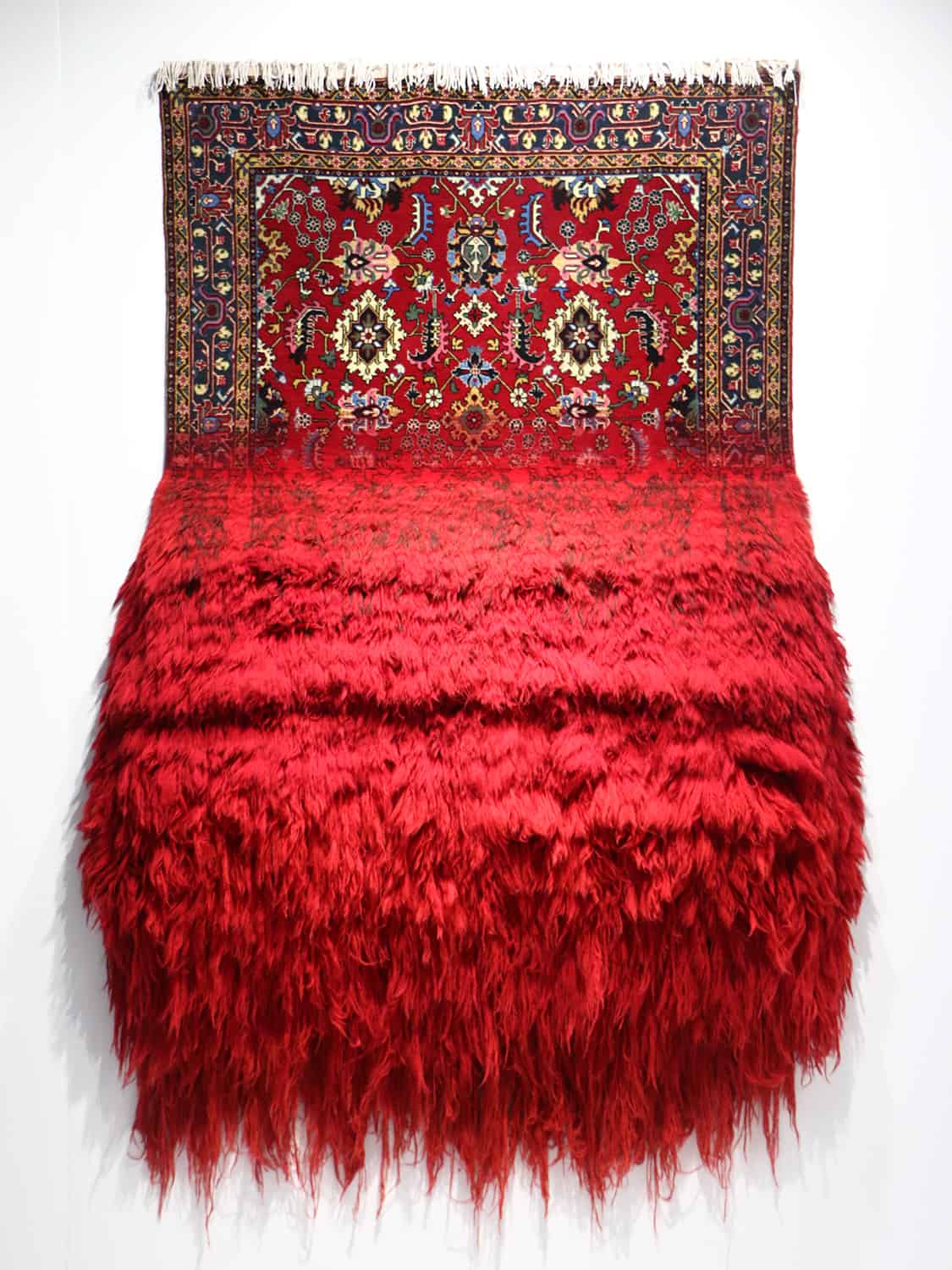
We have all heard a thousand times how artists, thinkers, philosophers, and many other great minds would have a certain idea come to them out of nowhere, inspiring them to create and produce their masterpieces. That wasn’t the case for Ahmed at all. “I think many expect from an artist this story, ‘I slept one day…’”, he laughed, “Maybe in the past, these things happened. In modern art, we have another tool — for example, analysis. It started from a discussion about Azerbaijani identity in global art, that discussion being between the Azerbaijani art community and my generation of artists. This gap between our generation and the Soviet generation. We were students of that generation, and we learned from them, but after the collapse of the Soviet Union, the first action was to copy the contemporary art of Europe, of the West. But in our generation, we started talking about how we cannot ‘win’ them because there is a global art competition. That’s why we understood that we should find some unique tools. How are we going to bring this to the global world? That was another question.”
Ahmed shatters the vision of artists who are unaware of today’s capitalist reality, and honestly and openly explains that “It derives from a very boring analysis.”
He humbly shies away from being the first to come up with the idea of using Azerbaijani carpets in his artworks. “Before me, there were artists, Chingiz Babayev for example, who used carpet as an idea to create an installation. He did it at the Venice Biennale, in the Guggenheim museum in Berlin, Germany. He made an installation with Azerbaijani fruits in carpet form. That was interesting actually. So that idea already was and still is being used by artists. Because it is an obvious object that has already existed in the world, in the mind of people, for thousands of years. My personal position was how this communication between this traditional local language can ask a global question. That was an analytical expression. Emotional was that I went through these traditional elements myself, that was the personal insights.” Ahmed believes that an artist has to break barriers within the society that they are part of and transform them.
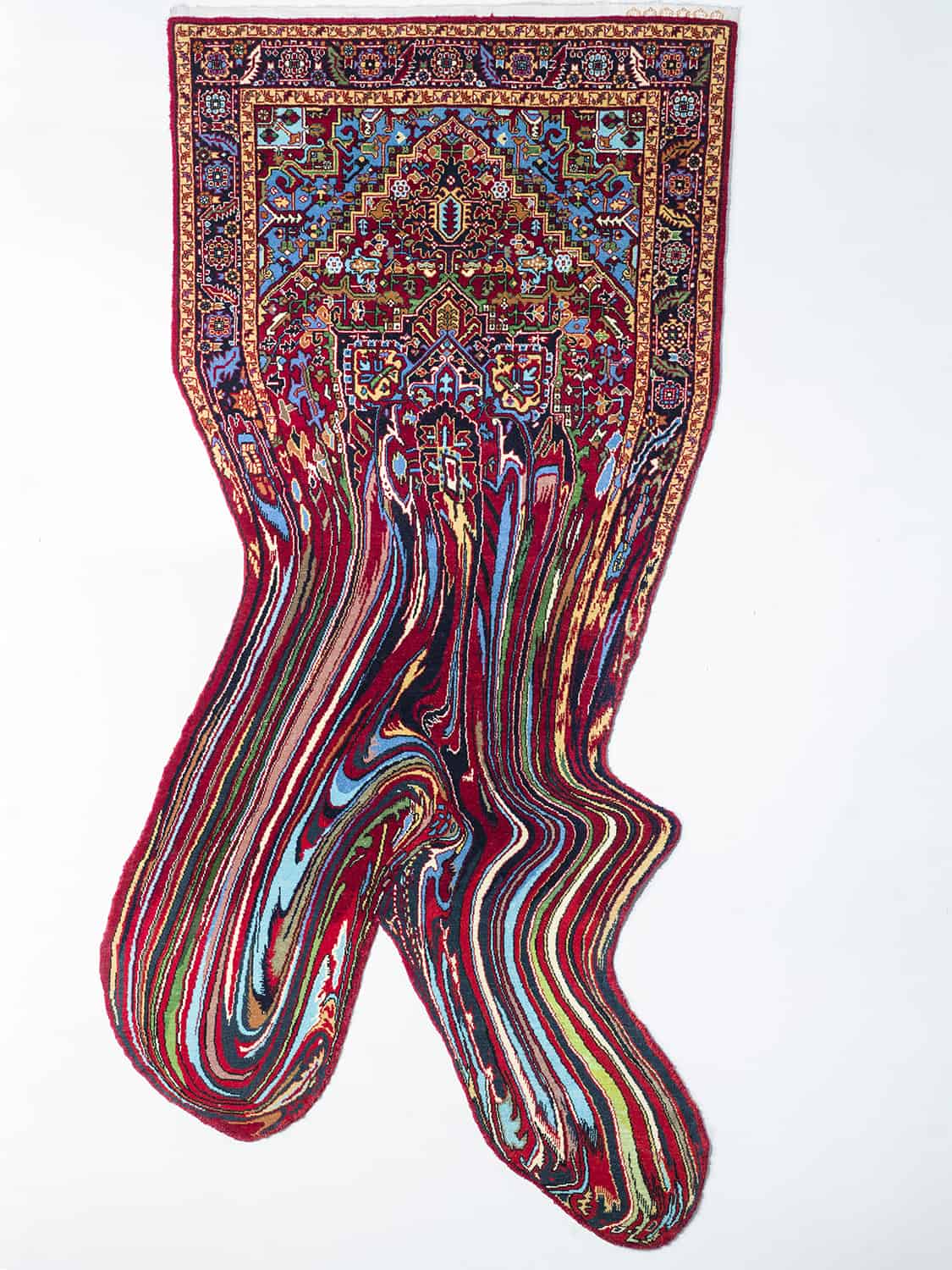
He looks back at his first carpet project and remembers that it was hard to explain to people his idea. “It was a war, it was a fight. There was a physical and emotional reaction to certain ideas of what we could do with the carpet. But it only tells what an important element it is.” As Ahmed was and still is working with Azerbaijani textile workers and carpetmakers, he understands that for them to accept to ‘ruin’ a perfectly made carpet was harder to do not because of the technical difficulties, but because of the emotional and psychological barriers. “It was part of my work. My first idea was to make these objects inside of a very traditional society.”
It usually takes two to five years for him to start working on the idea, as it also requires finding the people to work on it. “It’s not about just an idea, you have to work for it, and put energy in, even if it is a good idea. It is not easy to just do it.”
When he was starting his projects he was in huge debt, and there were many setbacks, but he knew he has to go through that phase in his life in order to succeed. “I knew that I should go through these falls. I don’t know how I knew it but I knew that it should happen. I used to be in this small studio, with no material, huge debt, and no project. But because you are understanding why you are starving, I was more motivated back then in my small studio than today in my big studio.”
Although Ahmed didn’t expect his carpets to become such a major success, he admits that it was due to him being able to crack the principle of what works and what doesn’t in the art world today. “Somehow maybe I understood the principle of how it should work. It wasn’t part of my plan, but it was part of the game.” He understood that in the end coming to the public is an essential part of being an artist. However, you cannot predict the reaction of your audience or the size of it.
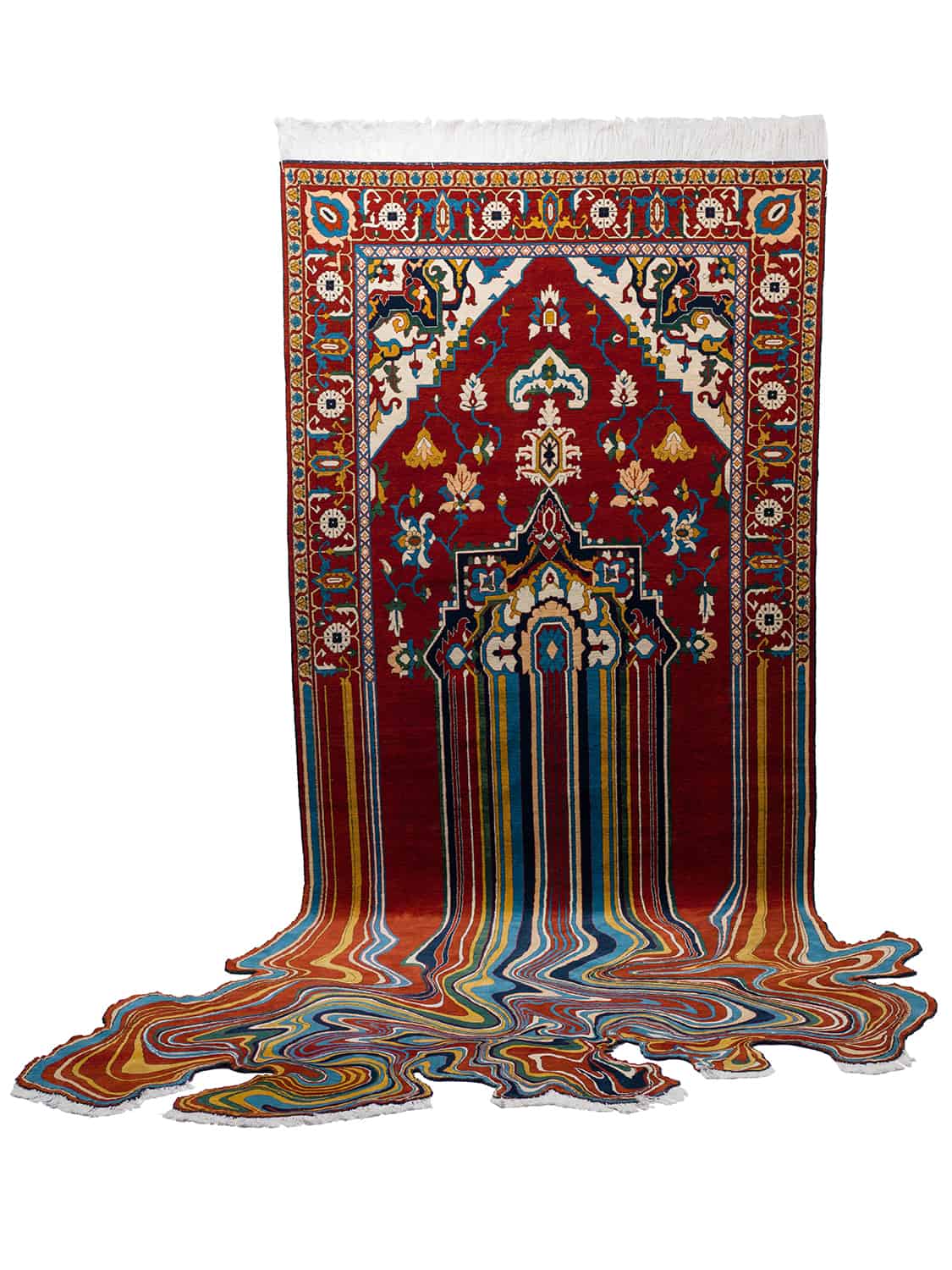
He never had any artists that he looked up to, he was simply trying to be himself. “I saw other artists, who had this authority, or some artist who influenced them. It’s okay it’s good, that’s how people used to act for thousands of years, but I never wanted that.” It was this mindset that made Ahmed’s art so unique.
When it comes to people whose opinions he values the most, Ahmed says: “My wife’s opinions are the most important. But another thing, of course, I am interested in the specialists’ point of view.” However, in the same way, he values professionals’ opinions, he values all others’ too. “All opinions are important…doesn’t matter who is a specialist or not. The art world is like this. It’s an approach of science to rely on specialists’ opinions. But art is different. It approaches from inside of human beings, doesn’t matter if you are an art expert or not.”
As many creative people are always the biggest critics of themselves, Ahmed is no exception to this rule. “I can be critical as a viewer asking why do you think it’s important. My own deep opinion is not about my work. Art is a mechanism with which I’m working. Once I read a very beautiful saying from Ai Weiwei, ‘I thought I am going to become an artist, but I became a human being.’ You should leave it as it comes to you. Then as I am sharing it with a bigger audience, then it can grow and grow.” He believes that an artist should distance himself from his art to let others criticize it: “So my point of view is not that important here.”
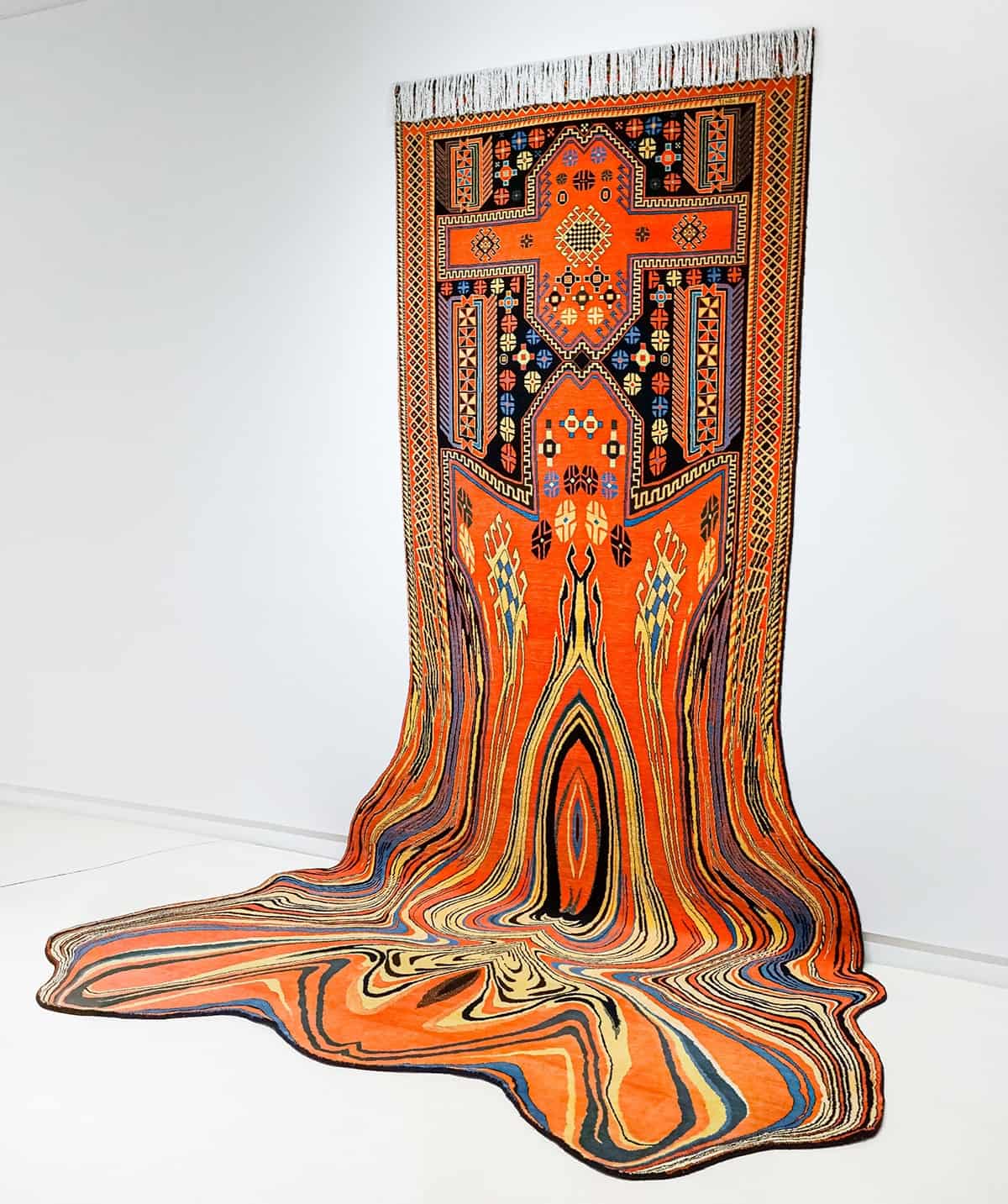
There is a belief since ancient times, and as we know from biographies of many famous painters and artists, that an artist is doomed to starve. Even though Ahmed is one of the greatest examples of this stereotype being outdated today, he thinks that starvation is crucial for artists. “Artists should starve in certain moments of their life. Because art is a game, a game with yourself. So if you are losing to yourself in this discussion, in this growing, in creating this new language, you are starving. This can be physical or it can be a big crisis for an artist. It is almost like a nuclear bomb. Because this path is a game, where you put everything you have because art is jealous. I tried to do that, to do something and do art, sometimes do business, work somewhere, etc. it never worked. That’s the main thing that people who want to be an artist or start this path have to know, art wants all of you. If you are ready to starve for this love, you will get there. Through starving, you are getting knowledge of art. It is almost a mystical practice that the artist is doing.”
He believes that even after becoming successful it is important to continue starving, however, it is important to take breaks from art. “At this moment, you have to go away from art, to divorce from art. This is what I am doing now for example. Because if you are all the time in this, you will starve and die,” Ahmed says. “I am living in the countryside now. I am not always talking about art.”
For the past five years, Ahmed has been working on another project that he calls ”a work related to theory and art practices.” “It’s been created with other theories, from psychological, biological, and art circles’ theories. I don’t want to say more, but it’s related to the work I did in 2016-2017 called Social Anatomy (Azerbaijani: Sosial Anatomiya).”
At the end of our interview, I asked him what does he wish someone told him when he was younger? “Whatever you are doing you are doing right. All knowledge came at the time when it was needed, and it was always there.”
Featured photo by Sarah Benet
You might also like:
Support us!
All your donations will be used to pay the magazine’s journalists and to support the ongoing costs of maintaining the site.
Share this post
Interested in co-operating with us?
We are open to co-operation from writers and businesses alike. You can reach us on our email at [email protected]/[email protected] and we will get back to you as quick as we can.
